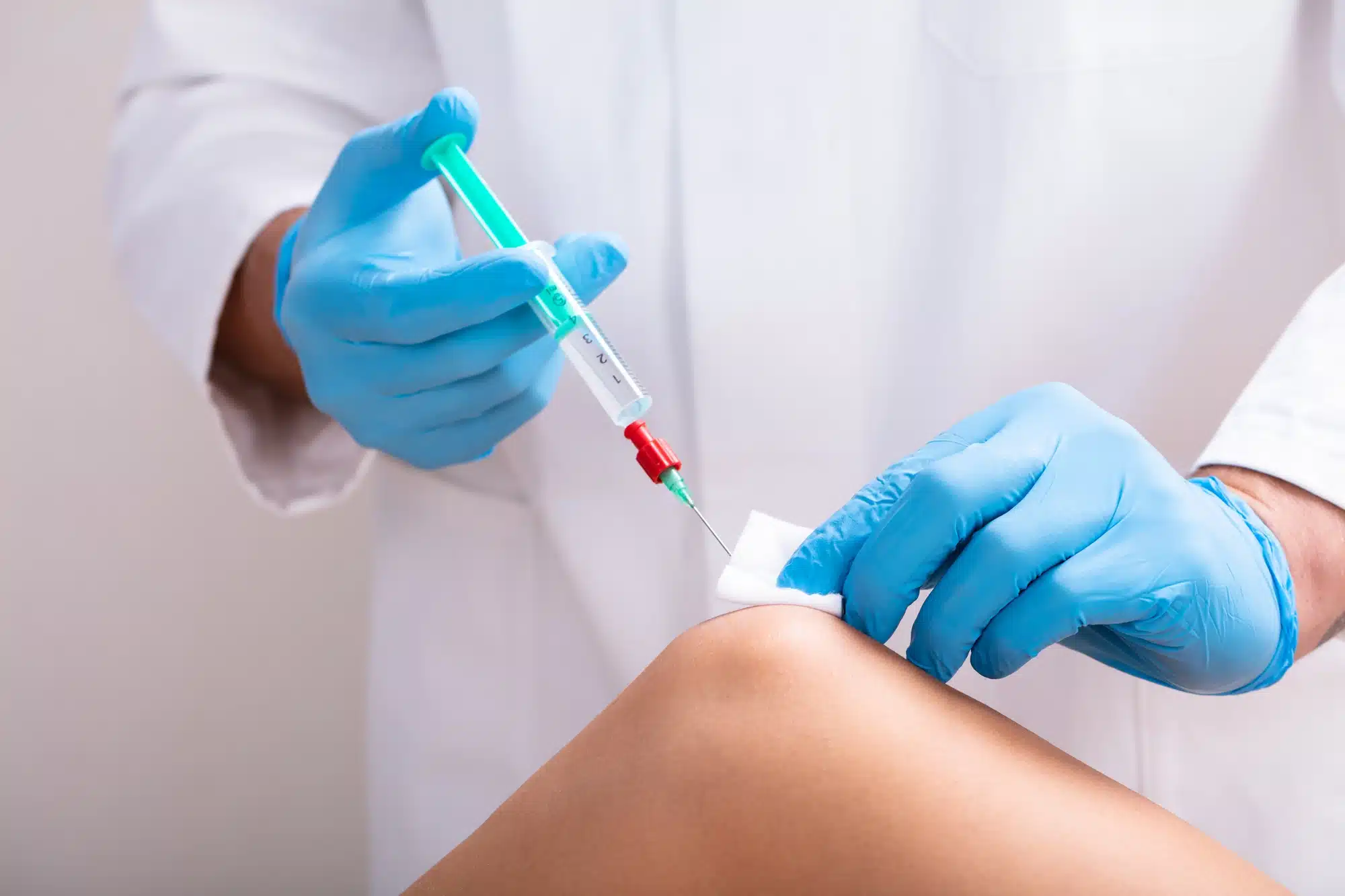
What is osteoarthritis (OA)?
Osteoarthritis (OA) is a progressive inflammatory disease of the synovial joints that results from cartilage degeneration. A synovial joint comprises two bones that are covered with strong articular cartilage. This protective membrane continuously secretes lubricating synovial fluid via a process known as weeping lubrication. This fluid ensures that the joints move smoothly without any painful friction between the bones. However, inevitable wear-and-tear combined with risk factors like excessive weight, genetics, and previous injuries cause the articular cartilage to break down. The bones will then painfully grind together and symptoms like reduced joint flexibility, tenderness, and stiffness will manifest.
Following OA diagnosis, most patients are advised by their physicians to undergo a combination of non-pharmacological (e.g. assistive devices, physical therapy, weight reduction if necessary, etc.) and pharmacological (e.g. analgesic agents, non-steroidal anti-inflammatory drugs, etc.) treatment modalities. However, this first line therapy may not always be successful at providing adequate relief to patients. Such patients are recommended to undergo second line therapy, which is viscosupplementation.
This medical procedure involves injecting the arthritic synovial joints with lubricating hyaluronic acid gel. Hyaluronic acid gel is a key component of the natural synovial fluid but is found in lower concentrations in osteoarthritic joints. Once the orthopedic implant had been administered into the affected joints, it will not only restore the usual joint function, but it may also help to postpone the need for corrective surgeries. The two most commonly used brands of viscosupplement are Orthovisc and Supartz.
What are the similarities between Orthovisc and Supartz?
Popular viscosupplements, Orthovisc and Supartz share some similar features:
Clinical Indication
These orthopedic gels are indicated for patients who had failed to respond adequately to simple pain relief medications and lifestyle modifications. Compared to other brands that can be used on a wide range of synovial joints, Orthovisc and Supartz are intended only to manage arthritic knee joints.
Active Ingredient
Both Orthovisc and Supartz contain highly purified hyaluronic acid gel that is free from potentially harmful pyrogens.
Mechanism of Action
Both brands are designed to mimic the biological action of the naturally occurring synovial fluid. Once the viscosupplement is injected into the articular space between the bones, the bones glide against each other smoothly. Painful symptoms of osteoarthritis are significantly reduced, and patients can enjoy a better quality of life.
Administration Technique
Both Orthovisc and Supartz must be administered into the synovial space between the bones. This intraarticular injection process can only be done by a certified and skilled healthcare professional once the affected joint has been assessed, cleaned, and disinfected. Any fluid effusion must be removed prior to implantation to reduce the risk of undesirable side effects.
Contraindications
Though these two brands are of high quality, they are contraindicated for use in some groups of patients due to an unestablished safety profile. These groups include expecting or breastfeeding patients, pediatric patients, patients who are affected by serious joint inflammation, and patients who have skin disorders affecting the proposed area of injection. Failure to comply to the warnings can result in health complications; hence, it is best that the patient’s medical history is extensively reviewed during the pre-procedural session.
Possible Side Effects
Following the viscosupplementation process, patients may develop some commonly reported inflammatory reactions such as swelling and pain. These side effects are generally contained within the injection area. Patients may also experience fluid buildup around the treated joints. Patients must obtain quick medical attention if their side effects worsen or persist.
What are the differences between Orthovisc and Supartz?
Despite their similarities, Orthovisc and Supartz differ from one another in a number of ways:
Origin of Hyaluronic Acid
Although both viscosupplements contain hyaluronic acid, the molecules are extracted from different sources. The hyaluronic acid particles in Orthovisc are manufactured biotechnologically via a bacterial fermentation process. The injectable gel has a hyaluronic acid strength of 15mg/ml, which is supplied in a 2ml syringe. The hyaluronic acid molecules in Supartz are harvested ethically from rooster combs. The final product has a hyaluronic acid concentration of 10mg/ml and is packaged in a 2.5ml syringe. Patients who are allergic to avian proteins can be treated with Orthovisc to prevent any allergic attacks.
Formulation
Besides the origin of the active ingredients, these intraarticular implants also have different molecular weights. Orthovisc has an average molecular weight of approximately 1 to 2.9 million Daltons whereas the average molecular weight of Supartz is approximately 0.62 to 1.17 million Daltons. These molecular weights are much lighter compared to that of natural synovial fluid found in healthy young adults, which has an average molecular weight of 6 million Daltons.
Number of Injections
For the purpose of ensuring an optimal outcome, Orthovisc is to be administered into the affected joint a total of three to four times, each session being a week apart. As for Supartz, a complete treatment course requires a total of five injections, also to be given on a weekly basis. Injections of either product will relieve pain for approximately 6 months.
Cost of Treatment
The estimated cost of treatment for Orthovisc and Supartz is $1,355.70 and $1,264.80, respectively, in the United States.
Related Articles
Joanna Carr
Offering Profiloplasty
Interested to learn more about Offering Profiloplasty To Clients? Browse Doctor Medica's comprehensive listing of blog posts.
Joanna Carr
Innotox Injection Sites Listed
Discover the recommended injection sites for Innotox, from forehead wrinkles to masseter reduction. Learn best practices for placement and technique.
Joanna Carr
Xeomin Dosing Chart: A Guide
Accurate dosing is crucial for achieving optimal treatment outcomes and minimizing the risk of adverse effects. Read accurate data here.


